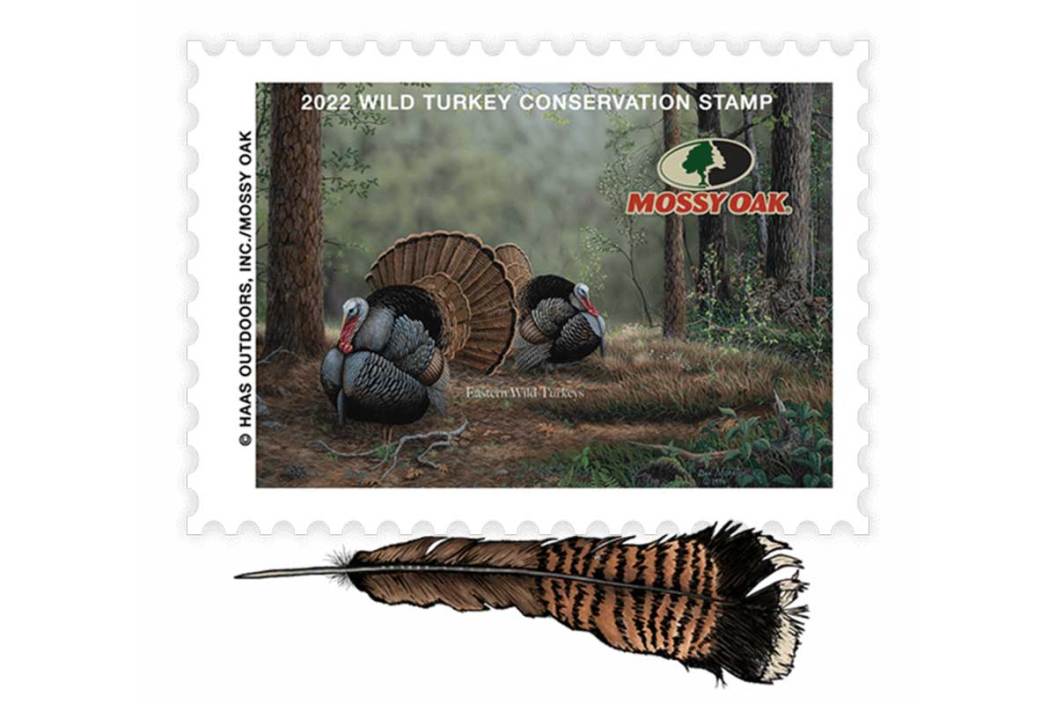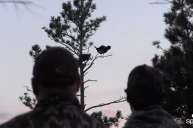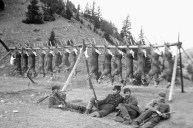The new Mossy Oak Wild Turkey Conservation Stamp is making positive change. Find out how to pitch in.
The name Mossy Oak has become synonymous with the outdoors and hunting for over 30 years. The camouflage brand has expanded its reach during its long tenure, and the Mossy Oak brand name can be found in various different markets that surround the outdoors and hunting industry.
One area that the Mossy Oak brand takes very seriously is wildlife conservation. This year, they are supporting turkey conservation with their all-new Wild Turkey Conservation Stamp.
All the proceeds from the sale of this conservation stamp will be donated directly to programs and research projects that are geared toward helping the wild turkey population endure for generations.
This limited-edition conservation stamp has a one-time cost of $15 and measures 1.5 inches by 2 inches in size. It features an image that is near and dear to the Mossy Oak brand, called "A Mossy Oak Moment." This stamp and the painting that it is based on are in very limited production and reprints; the painting was commissioned in 1995 and finished in 1996.
Let's take a deeper look into Mossy Oak's Wild Turkey Conservation Stamp.
"A Mossy Oak Moment"
The story behind "A Mossy Oak Moment" featured on the Wild Turkey Conservation Stamp is a very special one that was commissioned to Dan Moreton in 1995 and was completed the following year. Mossy Oak founder Toxey Haas asked that the painting show the nature of a turkey hunt shared by father and son, while also reflecting the release of the Mossy Oak Break-Up pattern.
Haas had grown up in the outdoors and his father worked diligently to help conserve the wild turkey population in the southern United States in the 1970s. Conservation was instilled in Haas and he believes that people who enjoy the outdoors have a responsibility to leave things better than they find them.
The painting portrays two fully fanned gobblers as the main focus of the scene, with the background fading away into the trees and forest. On the right side of the painting, a father and son wearing the Mossy Oak Break-Up pattern prepare to harvest one of the Toms. The son has a shotgun raised in aim while the father operates a box call. The detail is intricate, giving a very real-life feel to the painting.
The artist, Dan Moreton, is a self-taught painter who grew up enjoying the outdoors. He's known as a very meticulous artist that does portions of a painting at a time until he gets exactly the look that he wants before bringing all the pieces together into the final product. The original version of "A Mossy Oak Moment," which was 20 inches by 30 inches when completed, is now hanging in the office of Toxey Haas.
History of Wild Turkey Conservation Stamps
The history of Wild Turkey Conservation Stamps dates way back to 1956 when the U.S. Postal Service issued stamps to raise money for the conservation of wildlife and in particular the turkey. The actual creation of its own Wild Turkey Conservation Stamp would appear in 1976, modeled off the example of the Federal Duck Stamp. The only difference is that the Wild Turkey Conservation Stamp is a completely voluntary purchase, unlike the Federal Duck Stamp.
The stamps have quickly become great artistic competitions between artists to have their work displayed on the stamp every year. But by 1984, the Wild Turkey Stamp as a whole was discontinued as a large work that covered the nation. But to keep up the good work that the stamp provided, many states took up issuing their own Wild Turkey Stamps to help with their individual state's needs in preserving Wild Turkeys.
States like Wisconsin make a considerable amount of money from these stamps that is then directly used to help financially support the state's ability to manage and preserve the wild turkey numbers which allow for hunting opportunities in the state to continue. Other states like Arkansas have instituted a wild turkey stamp that allows proceeds to go directly towards turkey conservation.
With Mossy Oak releasing its Inaugural Wild Turkey Conservation Stamp in 2022, it marks the first occasion that a private company is embarking on the conservation stamps and giving 100% of the proceeds back to wildlife research and funding. This could be a trend that we see more private companies gravitate towards to help with conservation efforts.
Wild Turkey Conservation Through the Years
Wild turkeys have been prevalent since European settlers started coming to North America in the 1500s. But like many other species of wildlife, the turkey population was ruined by over-hunting and lack of conservation by the early 1900s.
In the early 1900s, the wild turkey population in North America was estimated to be around 30,000 birds, or basically on the brink of extinction. Today, over seven million turkeys inhabit North America, even expanding past their original range. But how was it done?
Starting in the late 1950s and becoming more impactful in the following decades, conservationists began to rebuild lost habitat and found that taking thriving birds from one area and reintroducing them into another area was proving to be a very successful method of bringing wild turkeys back to certain areas that had lost their populations.
The creation of the National Wild Turkey Federation (NWTF) in 1973 also helped as it worked closely with state and federal agencies to do everything they could to restore wild turkey populations across the United States and North America. Reintroduction plans and processes were a vital part in the population explosion that we see today in wild turkeys.
Many different methods of reintroduction were tried early on with plenty of mistakes and failures, but the tried and true method that worked the best was trapping wild turkeys and reintroducing them into areas that no longer had a turkey population. These resilient birds quickly took to their new environments and began to thrive with proper habitat and controlled hunting seasons, much to the pleasure of turkey hunters.
Continued Work
With the help and financial aid of companies like Mossy Oak and their use of a Wild Turkey Conservation Stamp, we can be hopeful that the wild turkey population will continue to thrive. But it will take work to continue these conservation methods for our natural resources.
Buying a Wild Turkey Conservation Stamp for $15 is a simple way to help the process and could be a fun way for stamp collectors to stay engaged in an ongoing process to preserve one of the greatest game birds in North America.
Do your part in helping out by buying a Mossy Oak Wild Turkey Conservation Stamp today.
READ MORE: OCELLATED TURKEY HUNTING: HOW TO PURSUE NORTH AMERICA'S MOST UNIQUE BIRD




